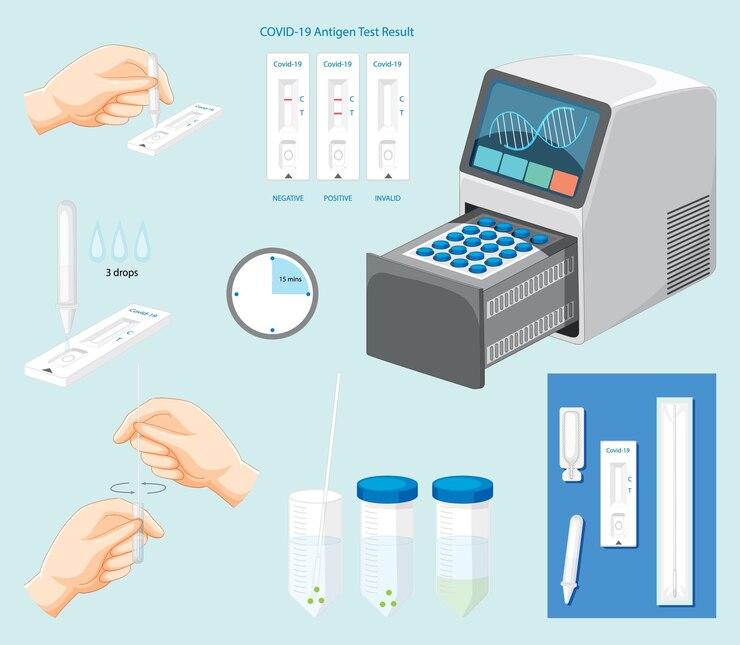In Vitro Diagnostics Test Kit Market: Addressing the Needs of Underserved Populations

The In Vitro Diagnostics test kit market has experienced remarkable growth, driven by innovations in technology and a heightened awareness of the importance of early disease detection. However, a significant challenge remains: ensuring that these advancements reach underserved populations. Access to reliable diagnostic tools is essential for equitable healthcare, and addressing this gap is crucial for improving health outcomes globally.
Current State of the IVD Market
The global IVD test kit market encompasses a broad spectrum of diagnostic tools used to detect diseases and monitor health conditions. This includes tests for infectious diseases, chronic illnesses, and genetic disorders. Despite the market’s expansion, disparities in access to these vital diagnostic tools persist, particularly in low- and middle-income countries (LMICs) and rural areas of developed nations. These populations often encounter barriers such as economic constraints, inadequate healthcare infrastructure, and limited availability of medical professionals.
Challenges Faced by Underserved Populations
-
Economic Barriers: The cost of IVD test kits can be prohibitively high for low-income individuals and communities. In many cases, even when tests are available, the associated costs of healthcare services, transportation, and follow-up care further limit access.
-
Limited Healthcare Infrastructure: In many underserved regions, healthcare facilities may lack the necessary equipment, trained personnel, and resources to conduct diagnostic testing. This limitation can result in delayed diagnoses and untreated conditions, exacerbating health disparities.
-
Geographic Barriers: Rural and remote communities often have limited access to healthcare facilities, leading to challenges in obtaining diagnostic tests. Long distances to healthcare providers can discourage individuals from seeking necessary testing and treatment.
-
Lack of Awareness: Many individuals in underserved populations may be unaware of the importance of regular health screenings and the availability of diagnostic tests. Cultural beliefs and stigmas surrounding certain conditions can further impede access to care.
-
Regulatory and Supply Chain Issues: In some regions, complex regulatory requirements and weak supply chains can hinder the distribution of IVD test kits. This can result in delays in getting essential diagnostic tools to the communities that need them most.
Strategies to Enhance Access to IVD Test Kits
To effectively address the needs of underserved populations, several strategic initiatives can be implemented:
-
Affordability and Pricing Strategies: Manufacturers and healthcare providers should consider tiered pricing models that make IVD test kits more affordable for low-income individuals. Partnerships with governments and non profit organizations can also facilitate subsidies or funding programs to lower costs for underserved communities.
-
Strengthening Healthcare Infrastructure: Investing in healthcare infrastructure in underserved regions is crucial. This includes equipping healthcare facilities with the necessary diagnostic tools and providing training for healthcare professionals. Mobile clinics and telehealth solutions can also extend reach and provide access to diagnostic testing in remote areas.
-
Community Outreach and Education: Raising awareness about the importance of early diagnosis and the availability of IVD test kits is essential. Community health programs can educate populations on the significance of regular screenings and empower individuals to seek care. Culturally sensitive messaging can help address misconceptions and encourage proactive health management.
-
Enhancing Distribution Channels: Collaborating with local organizations and health ministries can improve the distribution of IVD test kits to underserved areas. Strengthening supply chains and logistics networks ensures that diagnostic tools are available where they are needed most.
-
Leveraging Technology: Technological innovations, such as point of care testing and telemedicine, can enhance access to diagnostics. Portable test kits that can be used in community settings or at home can significantly reduce barriers to testing.
-
Public-Private Partnerships: Collaboration between public and private sectors can drive initiatives aimed at improving access to IVD test kits. Joint efforts can lead to innovative solutions, including the development of low-cost tests tailored to the needs of underserved populations.
- Art
- Causes
- Crafts
- Dance
- Drinks
- Film
- Fitness
- Food
- Giochi
- Gardening
- Health
- Home
- Literature
- Music
- Networking
- Altre informazioni
- Party
- Religion
- Shopping
- Sports
- Theater
- Wellness


